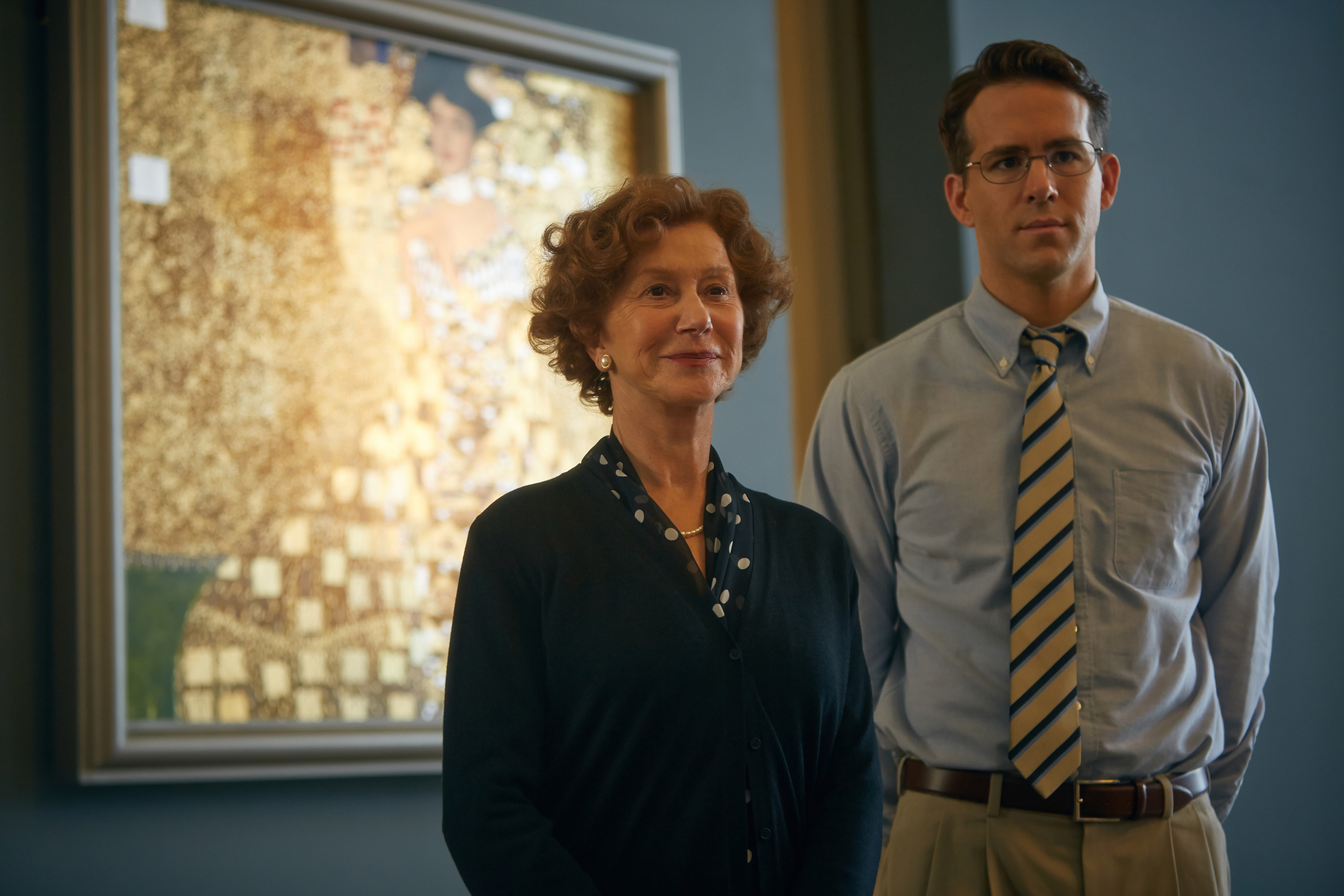It may only be April, but Woman in Gold, the latest film by director Simon Curtis (My Week with Marilyn) is certainly the frontrunner for the schmaltziest film of the year. Like a serving of pancakes drenched in far too much syrup, it’s gooey, sticky and sickly sweet; a film comprised entirely of scenes in which mushy sentimentality is prioritized over craftsmanship or any true sense of emotional realism. Oh, and it happens to be based on a true story centered around a Holocaust survivor in addition to being produced by Harvey Weinstein. Are you crying yet? …Why aren’t you crying harder?
The film tells the story of Maria Altmann, played by the great Helen Mirren, a Jewish woman who escaped from Nazi-occupied Austria during World War II. Altmann may have escaped to America with her life, however, not only was she forced to leave her family behind, but their array of private possessions that were illegally seized by members of the Third Reich. One such relic was a painting of her aunt by the famous Gustav Klimt, “Portrait of Adele Bloch-Bauer,” of which the titular significance of this picture stems from. Determined to claim back her familial artwork, Altmann hires a handsome young lawyer, Randal Schoenberg (Ryan Reynolds), who’s also of Jewish descent, to initiate a lawsuit against the Austrian government and reclaim the portrait that is rightfully hers.
And so begins a predictable, by-the-numbers underdog story in which these two unlikely protagonists fight authoritarian powers in the name of what’s just. There are no surprises here, and Curtis has no sense of visual flair. The framing of nearly every scene is both flat and uninspired, making this cornball story feel all the more rudimentary. Even worse, the film’s various flashbacks to Nazi Austria, in which Altmann is played by Orphan Black star, Tatiana Maslany, are all saturated with a bright white hue as if they were shot through a bad Instagram filter.
Fortunately, the performances, for the most part, are quite strong, which helped me slog through this formulaic goop. Mirren, of course, is terrific, delivering even the lamest jokes with an inspired sense of spunk, and the most contrived speeches with more authenticity than the movie deserves. Maslany is equally good, who, despite having to star in the most manipulatively mushy sequences of the film, such as a grossly artificial goodbye to her parents, comes off as a genuine talent.
Reynolds has been criticized of delivering a bland turn as Schoenberg, and while he is a thin, stereotypical character, I think Reynolds does a fine job here. He may not be the most convincing lawyer, but he and Mirren have good chemistry with one another, especially during the more lighthearted exchanges. Unfortunately, the same can’t be said when it comes to his scenes with his wife, bizarrely played by Katie Holmes, who’s not really a character so much as a motivational plot contrivance. Like so many wives of male protagonists these days, she has no other purpose than to nag at our hero or pat him on the back after all his hard work.
Woman in Gold isn’t as exploitative as I feared it could have been, and it has no malicious intent by any means, but it’s still a hokey piece of cinema that uses the horrors of the Holocaust for little else but yanking the viewers’ heartstrings. Altmann’s story is certainly one that deserves to be told, and in the hands of a better filmmaker, her life could have been adapted into a complex, powerful and provocative motion picture. Yet, as with so many ‘based-on-true-story’ movies these days, this one comes off like a superficial Lifetime movie starring first-rate actors, with no other goal than to make you cry. Your tears deserve better, and so does Altmann.



















